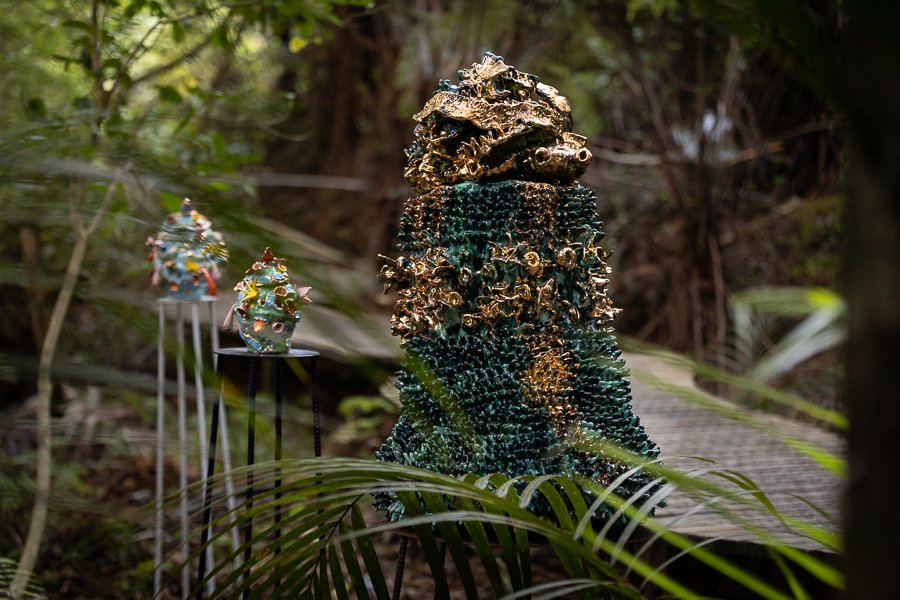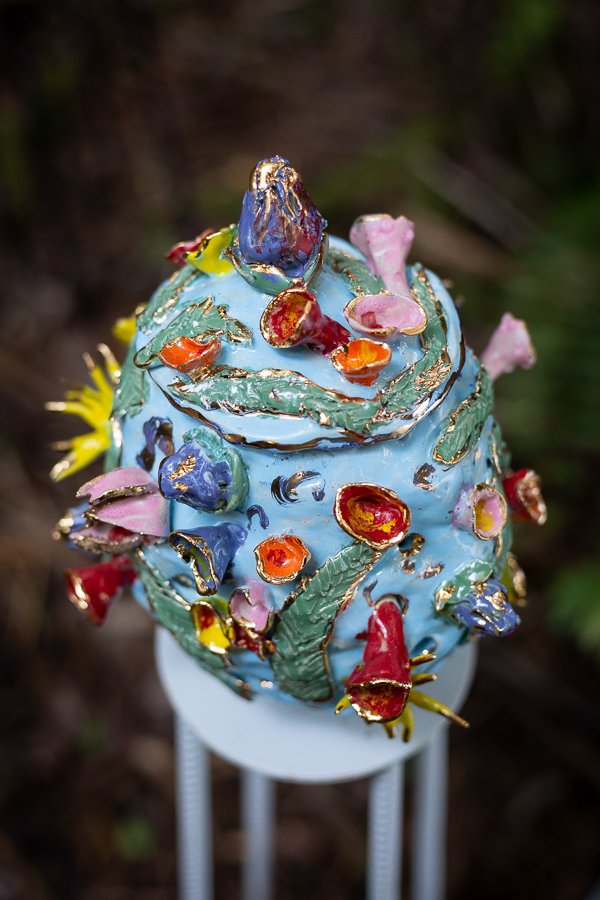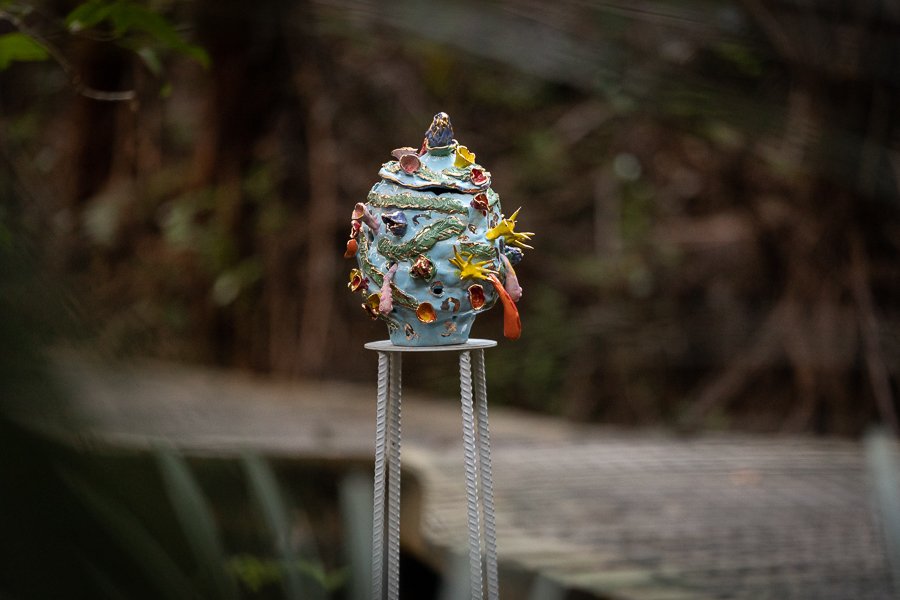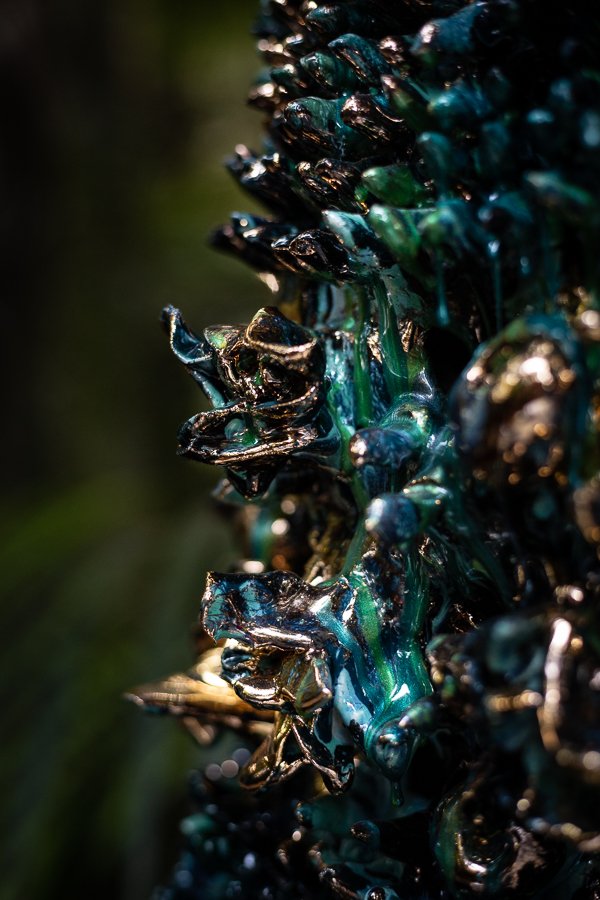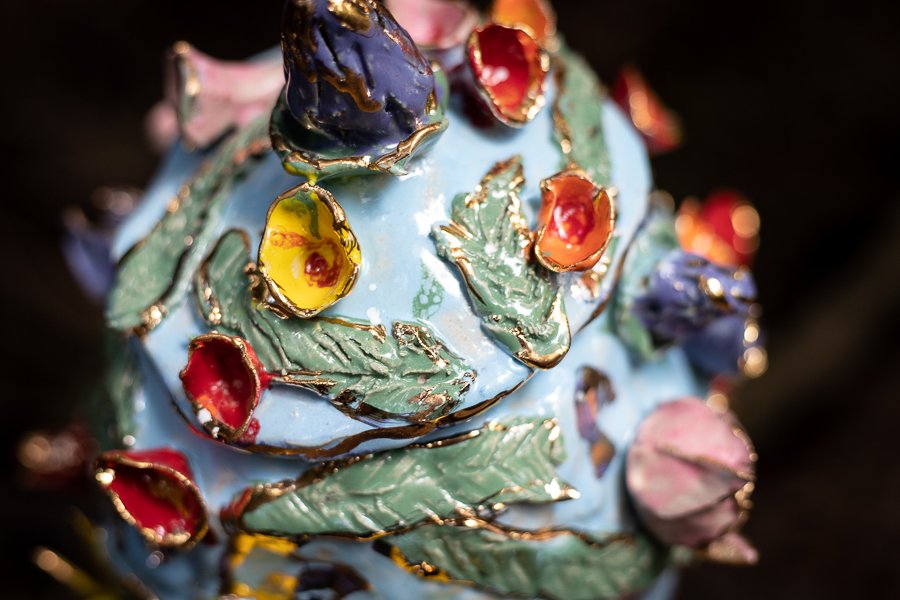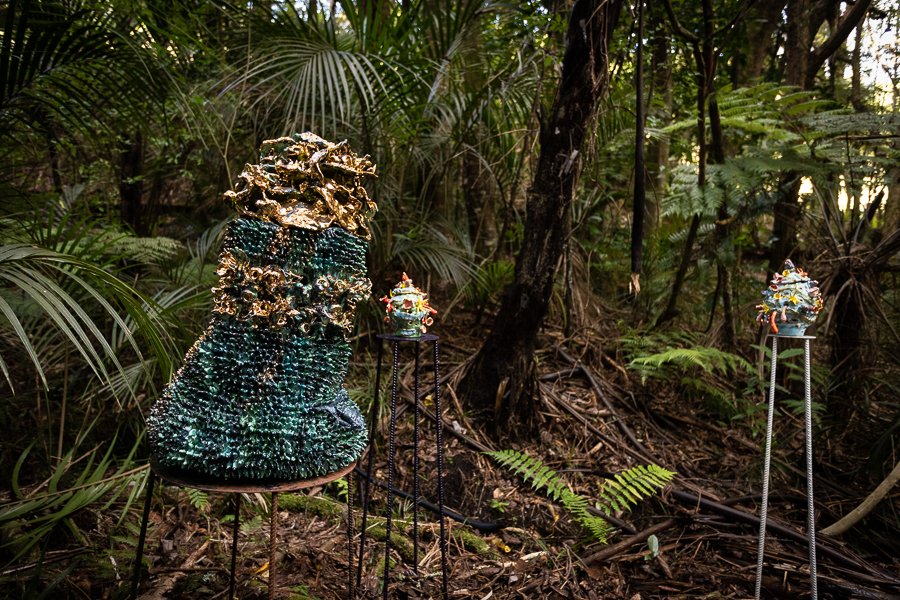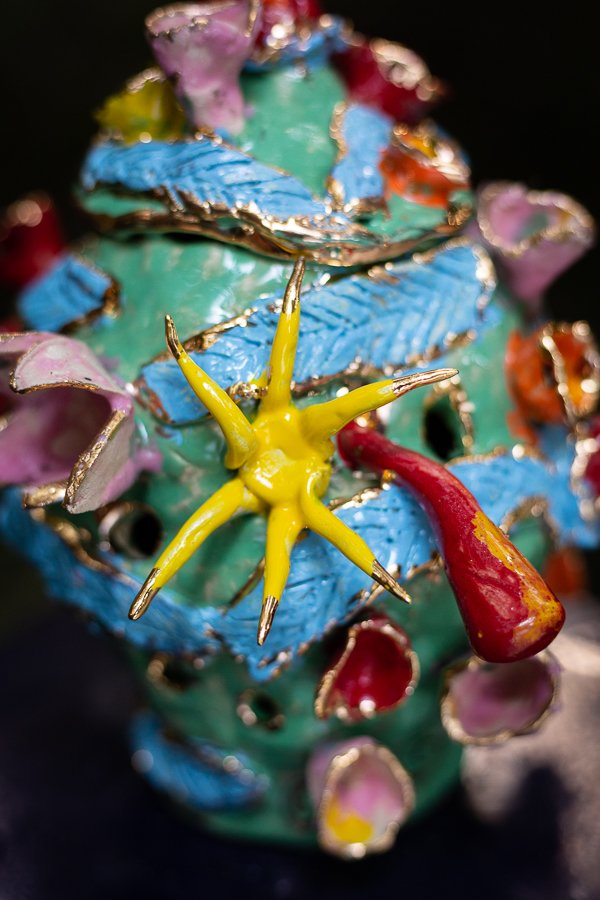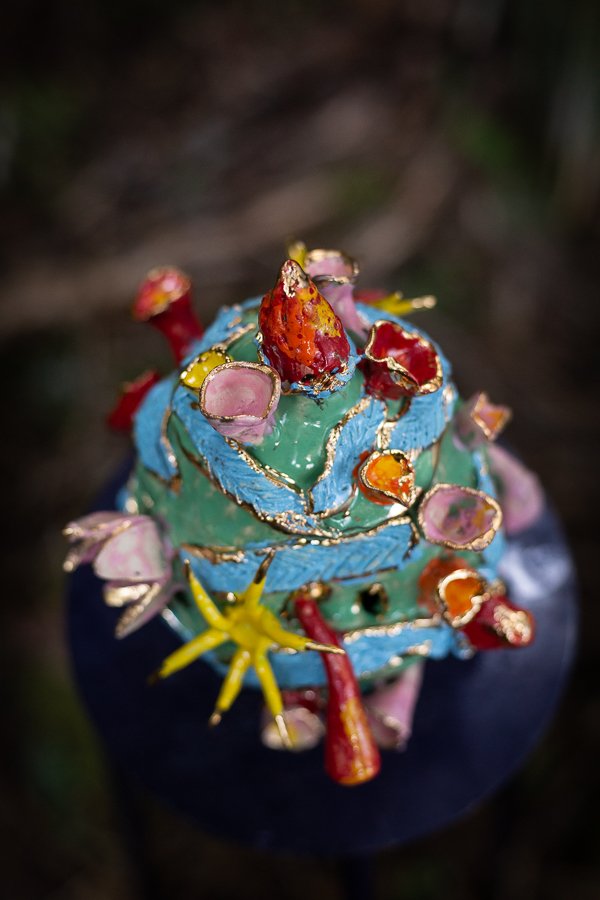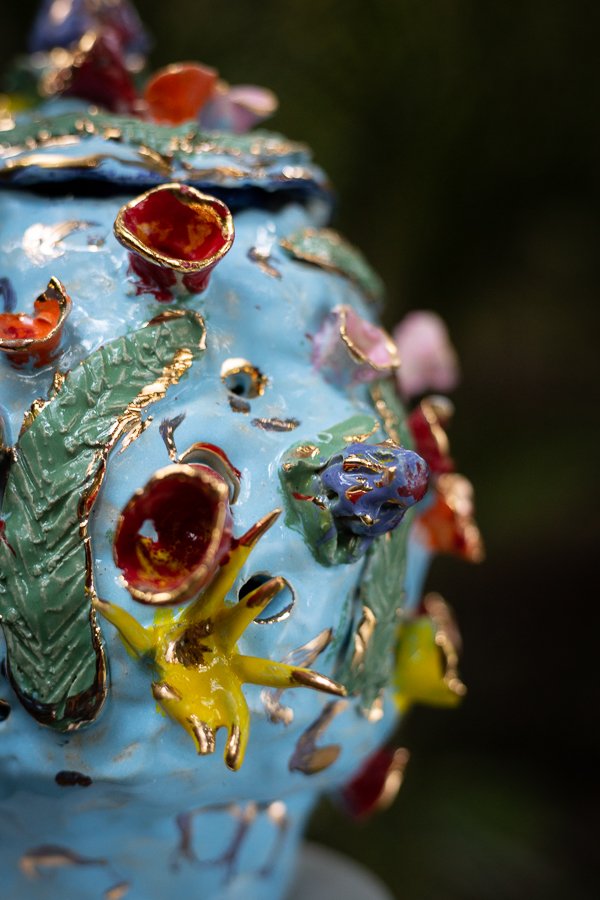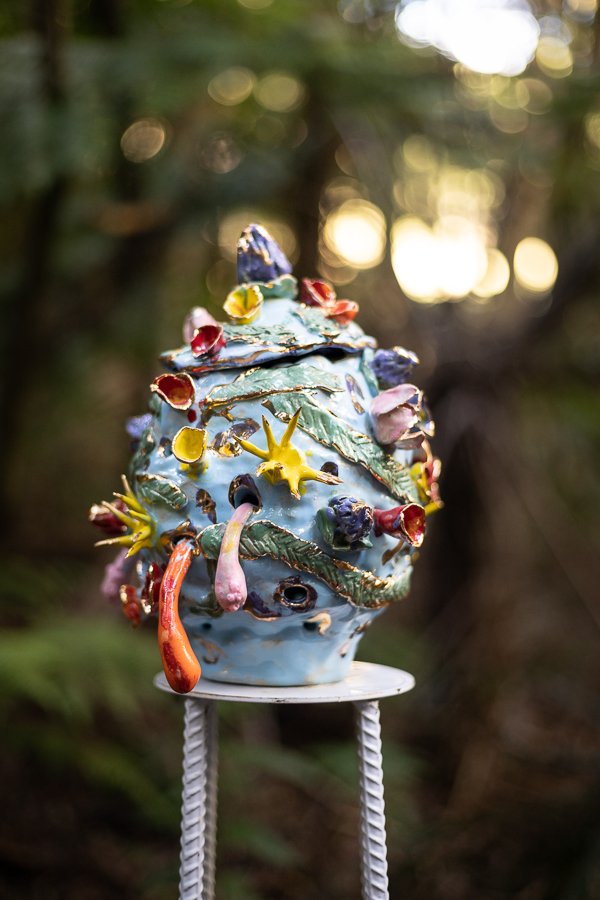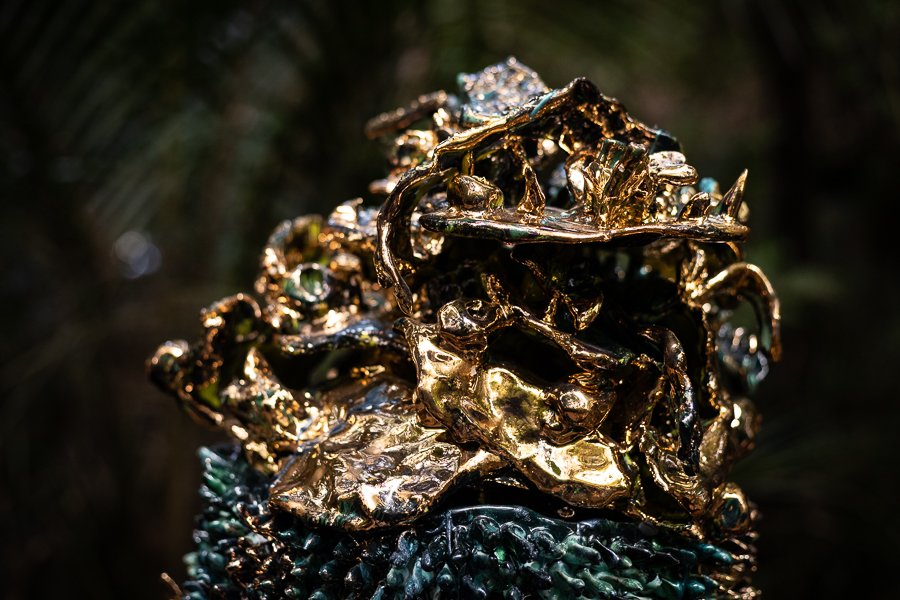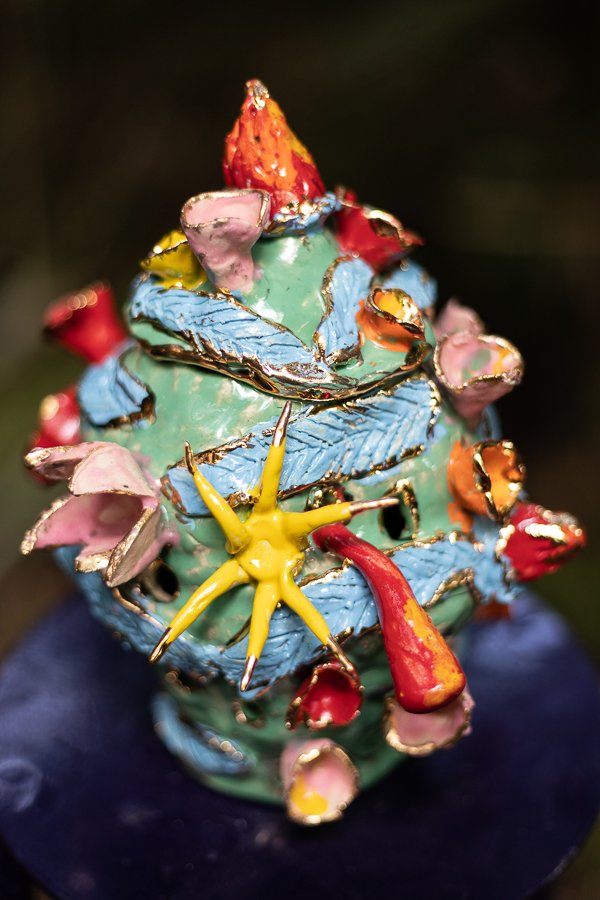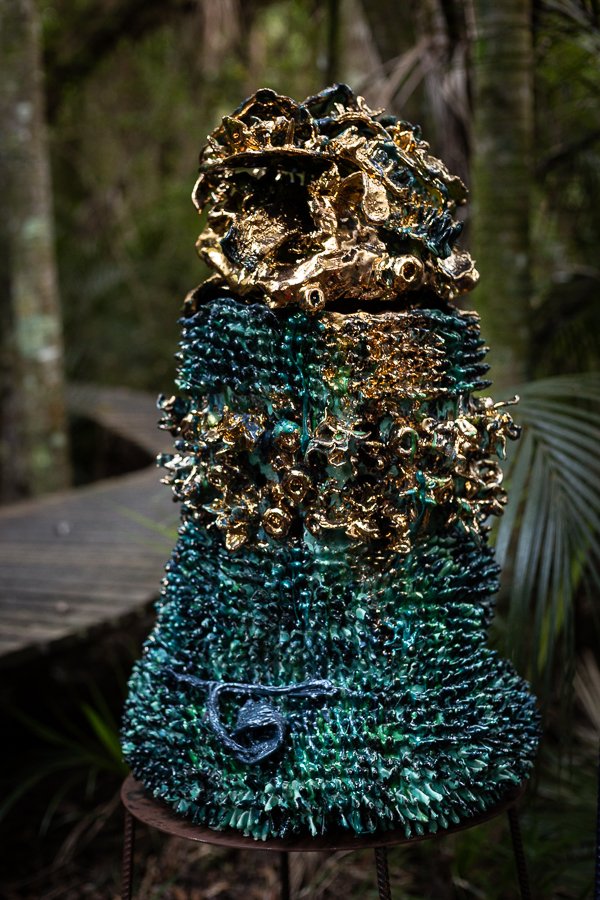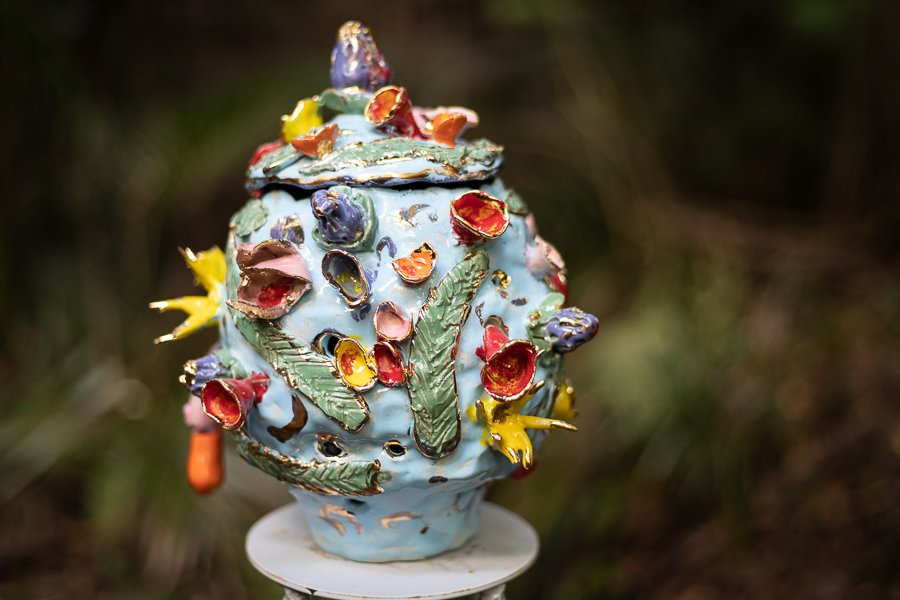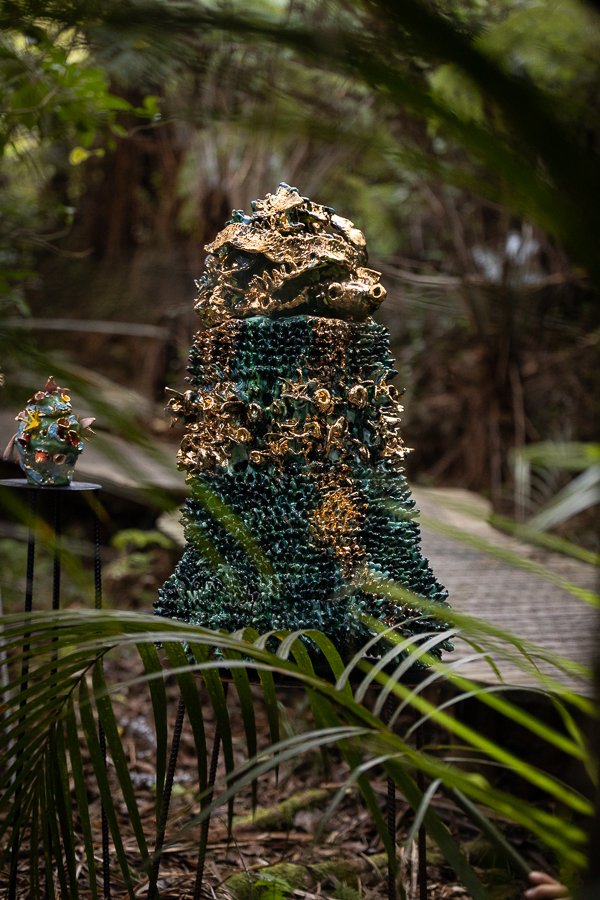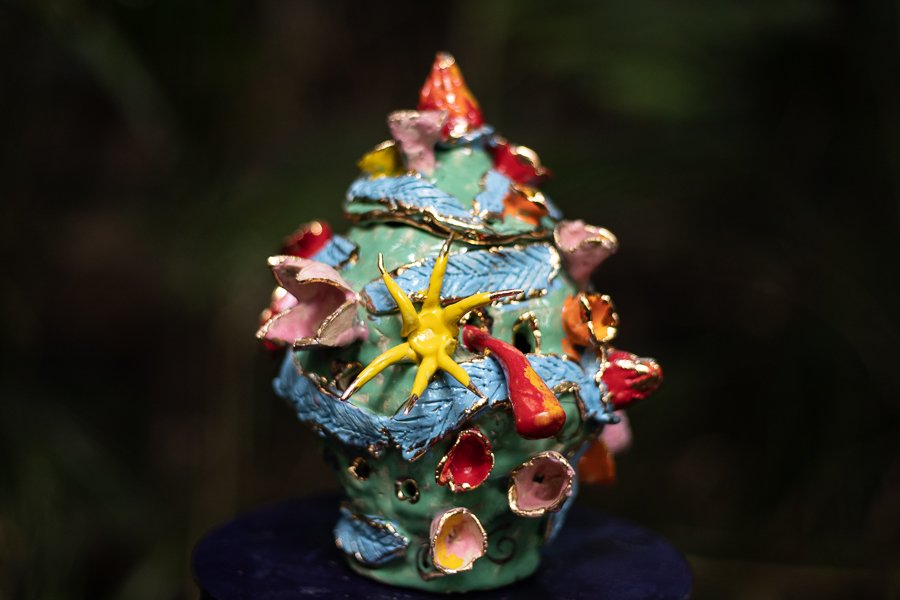VIRGINIA LEONARD
Green Toes, 2022
Clay, pure gold and resin
700mm x 400mm x 500mm
Price on request
Urns for Unwanted Limbs (blue), 2022
Clay and pure gold
300mm x 250mm
Price on request
Urns for Unwanted Limbs (green), 2022
Clay and pure gold
250mm x 200mm (varying)
Price on request
Proudly presented in association with Gow Langsford Gallery.
As Objectspace Director Kim Paton notes, “the act of describing artist Virginia Leonard’s ceramic sculptures is a scramble for adjectives. A word grab for soundbites that might go some of the distance to illustrate the sensation of the work’s form and surface…It’s no criticism to say Leonard’s work is full on. Full colour, full texture, full noise.”
Virginia Leonard is well-established (both in New Zealand and internationally) for her striking, experimental approach to clay sculpture. Originally having trained as a painter, Leonard was drawn to ceramics after being involved in a serious motorcycle accident which resulted in a long hospitalisation period and an aftermath of living with severe chronic pain.
Of the explicit link between her life experience and her art-making, Leonard describes: “My works are self-portraits that address my bodily scarring and chronic pain. Chronic pain has no biological value…it lacks both language and voice. The language of my clay making is my attempt to rid my body of trauma and reduce my level of chronic pain.” The intimately physical process of working with clay, resin and glaze has been Leonard’s way of exploring that pain and trauma, with her elaborate vessel forms traversing the line between order and chaos. Through tearing, smearing, lumping and clumping the clay, the forms come together to be representative of bodies, and presented on plinths and platforms, the viewer meets them figuratively as sculptural torsos to be examined - with curious lumps, growths, orifices, fingers, claws, dimples, warts and all.
In Urns for Unwanted Limbs, other themes and imagery emerge to accompany Leonard’s autobiographical thread. There has always been a decadent nature to her sculptures, recalling the Baroque era of decorative grandeur, and specifically, the ornamental style of Rococo. But in Leonard’s most recent body of work, the sculptures take on a number of meanings which find fanciful, joyful expression. The viewer is called to imagine the exquisite underworld world of caves, sea beds and corals and the wondrous creatures which may live there, or the dense, entangled tropical jungle habitat, teeming with weird and wonderful plant-life, or the discovery of forgotten treasure chests, overflowing with glowing gold nuggets and glittering, lustrous jewels.
Leonard herself notes that alongside a deeply cathartic psychological release, the powerful element of humour is in play as she revels in an exploration of the grotesque, the absurd and the completely ridiculous. Perhaps what is most curious about Leonard’s sculptures is not the conclusive answers they give, but the ideas they stir up, the connotations they offer, and the reasons they give us to pause and imagine.


